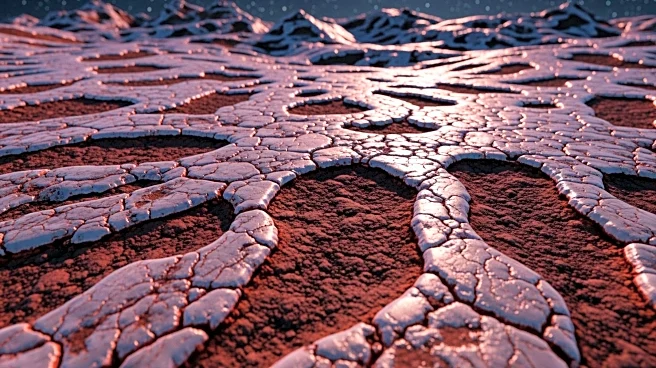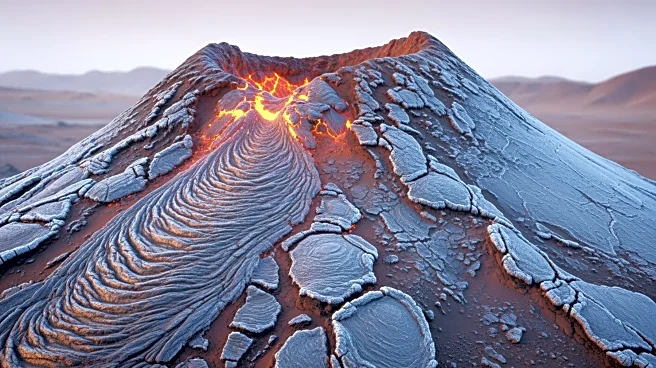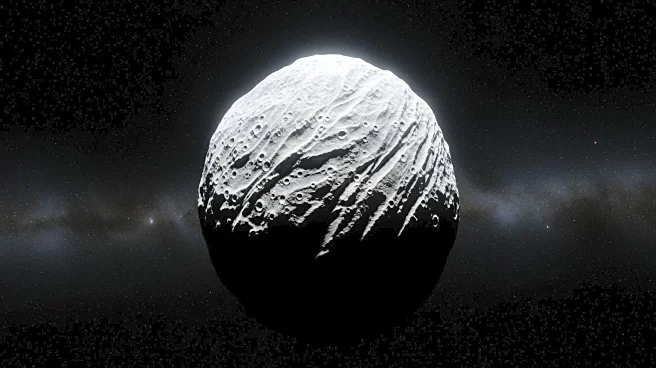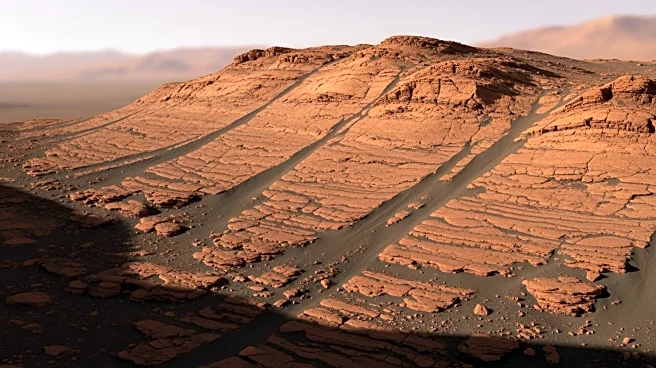What's Happening?
The European Space Agency (ESA) has released new images of Olympus Mons, the largest volcano in the solar system, located on Mars. Standing at 27 kilometers high with a base over 600 kilometers wide, Olympus Mons was
first identified by NASA's Mariner 9 spacecraft in 1971. The recent images, shared on social media, depict frozen lava rivers flowing down the volcano's slopes. These images were captured by the Mars Express orbiter and highlight the volcano's southeast flank, featuring overlapping lava flows, steep cliffs, and signs of ancient collapses. The ESA notes that the scarp, a cliff encircling the volcano, was formed by massive landslides. The lava flows, now solid rock, once spread into wide fans and carved channels as they cooled. The surface of Olympus Mons is considered geologically young, possibly just tens of millions of years old.
Why It's Important?
The images of Olympus Mons provide valuable insights into the geological history of Mars, offering clues about the planet's volcanic activity and surface evolution. Understanding these processes is crucial for scientists studying Mars' past environment and its potential to support life. The relatively young surface of Olympus Mons suggests ongoing geological activity, which could have implications for future exploration missions. Additionally, the presence of features like the horseshoe-shaped channel hints at a more complex history involving both lava and water, raising questions about Mars' climatic and hydrological past. These findings contribute to the broader understanding of planetary geology and the conditions that may have existed on Mars, informing future research and exploration strategies.











